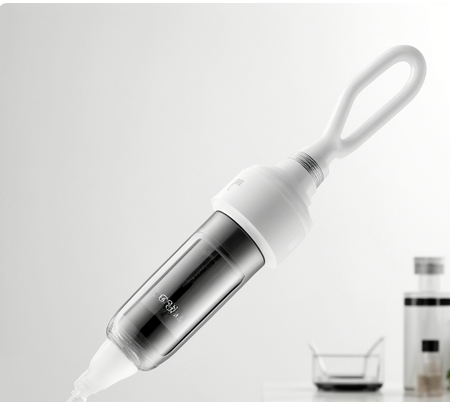
News and Blogs
Must-see for medical institutions: saliva collector quality verification methods and performance standards
As the core equipment of biological sample collection technology, the modern saliva collection system has three core modules: an ergonomic sample collection funnel, a sterile anti-countercurrent collection tube, and a biological preservation liquid with long-term anti-corrosion function. According to the 2023 industry report of Grand View Research, the global saliva collector market size has reached US$1.27 billion, with an annual compound growth rate of 7.2%. This rapid growth has given rise to a production pattern with uneven quality. Currently, there are two typical suppliers in the market: modern biotechnology companies that have passed the ISO 13485 quality management system certification, and OEM processing manufacturers that lack professional qualifications.
In the medical device classification system, although saliva collectors belong to the first category of products, high-quality suppliers usually actively apply for stricter production licenses for Class II medical devices. Taking Manta cc, an industry leader that has passed CE certification, as an example, its 100,000-level clean workshop uses a dynamic air filtration system, and its microbial control level is 42% higher than that of ordinary factories. The nucleic acid preservative solution independently developed by the company has obtained a national invention patent (patent number: ZL1.8). Clinical data shows that this formula can maintain the DNA integrity of the sample for 72 hours at 28℃, which is significantly better than the industry average of 94.6%.
The measured data from professional laboratories reveal the performance standards of high-quality saliva collectors: the fluid mechanical design of the collection funnel should achieve a sample capture rate of more than 97%, and the anti-counterflow valve needs to pass 200 opening and closing durability tests. The third-party testing report should include three key indicators: the microbial limit must comply with the USP<61> standard, the fluctuation range of the storage liquid pH value is controlled between 7.2-7.6, and the transportation seismic resistance performance must meet the 4.3G vibration intensity that meets the ISTA 3A certification requirements. It is worth noting that the precision of the acquisition tube mold using CNC injection molding process must reach ±0.02mm, which can reduce the probability of seal failure by 67% compared with the error of ±0.1mm in the traditional process.
For medical institutions with annual procurement volume of more than 500,000 units, it is recommended to implement a three-level quality verification system: first, verify the supplier's medical device production filing certificate and ISO certification certificate, second, review the measurement and calibration certificate of automatic filling equipment (the error range must be ≤±0.1ml), and finally confirm whether the clean workshop is equipped with real-time particle monitors through flight inspection. Practice shows that the sample detection abnormality rate of institutions that implement this verification process can drop from 1.8% of the industry average to below 0.6%.
Guide to verify supplier qualifications under geographical restrictions
In supply chain management practice, when facing regional restrictions, it is recommended that the purchaser focus on checking three core quality verification points: First, the manufacturer is required to transmit the clean workshop monitoring screen in real time to confirm production compliance; Second, the raw material batch traceability documents must include material code, supplier qualification certificate and quality inspection report; Third, check the coverage of ISO13485 certification to ensure that it includes a special production line for saliva collectors.
In terms of technological innovation and application, leading manufacturers generally have teams of molecular biology experts, and can optimize the storage liquid system for different detection needs. Typical cases, in the field of COVID-19 detection, a listed company developed a virus sampling tube using a dual protection mechanism: in addition to adding 0.5% concentration of RNAS inhibitor, a pH buffering system is also installed to extend the storage time of viral RNA under 4℃ cold chain conditions from 72 hours to 120 hours. This type of technological breakthrough has passed the FDA emergency use authorization certification.
Personalized configuration solutions are becoming an industry trend. The modular design platform allows the laboratory to select the appropriate collection tube specifications in the 1-5ml capacity range according to the sample size requirements. What is more worthy of attention is the intelligent coding system. Some manufacturers provide 13-bit composite barcode integrated sample type identification, collection time stamps and transportation temperature monitoring data, which improves the laboratory pre-processing efficiency by more than 30%.






